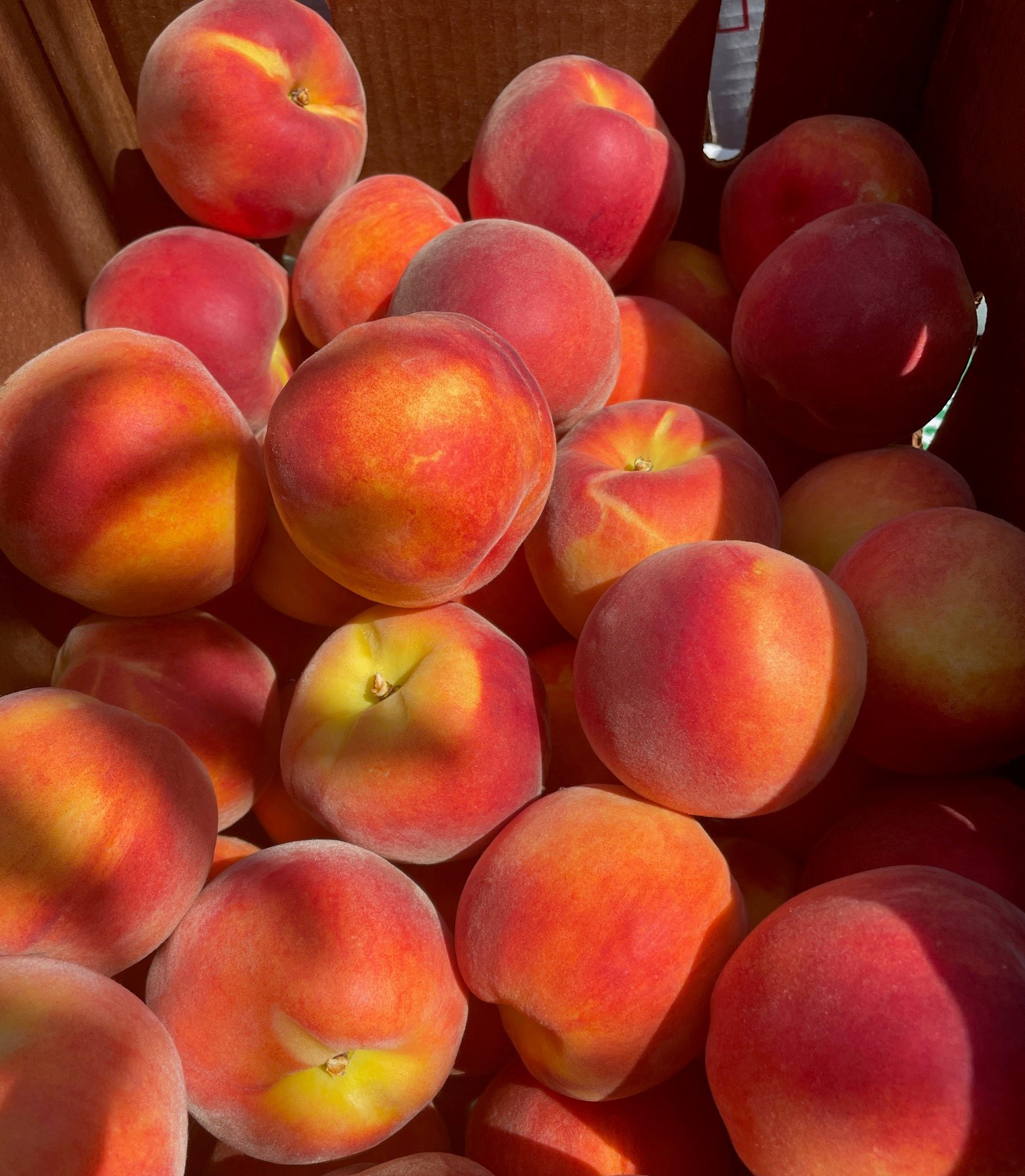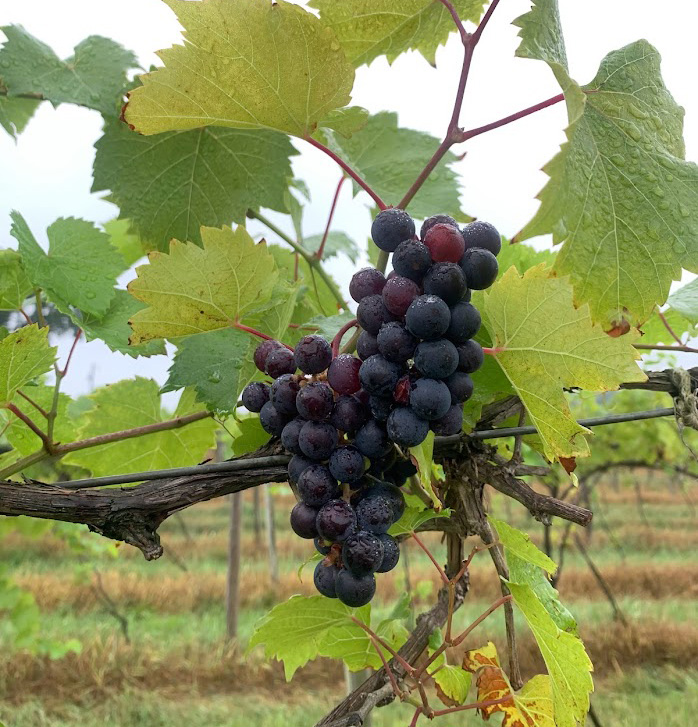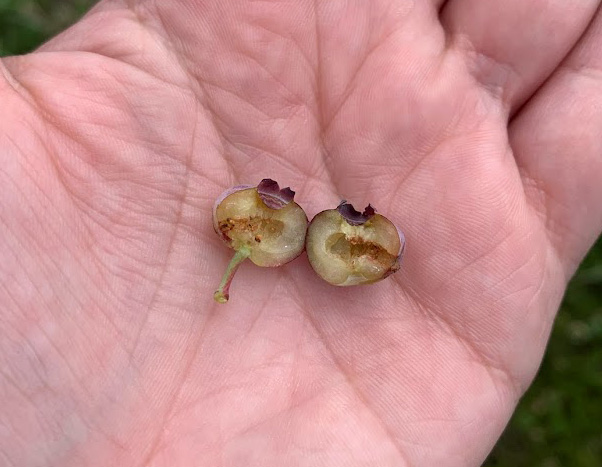Southwest Michigan fruit update – August 8, 2023
Moderate temperatures, rain and sun are favorable for fruit development in southwest Michigan.

Weather
Last week had moderate temperatures with minimum and maximum temperatures ranging from the low 60s to the upper 70s/lower 80s. Rainfall ranged from 0.5 to 2 inches over this time period.
Over the past week, we collected 419 growing degree days (GDD) base 42 and 299 GDD base 50, respectively. We are somewhat below the long-term seasonal average for heat unit accumulation.
|
Southwest Michigan GDD summary from March 1 – August 8, 2023 |
|||
|---|---|---|---|
|
Station |
GDD 42 F |
GDD 45 F |
GDD 50 F |
|
Benton Harbor (SWMREC) |
2721 |
2358 |
1805 |
|
Lawton (Lawton) |
2719 |
2357 |
1803 |
|
Fennville (TNRC) |
2526 |
2174 |
1642 |
|
Average for the SW region |
2656 |
2297 |
1753 |
|
Average last week |
2237 |
1923 |
1454 |
This week is looking to be seasonably warm through Wednesday with it cooling off later in the week. There are chances for scattered showers Tuesday, with showers likely to develop Friday evening continuing overnight into Saturday morning. Sunday is likely to be dry with some showers possible on Monday.
Tree fruit
San Jose scale male catch numbers continue to be high with red spots from crawlers appearing on fruit. Oriental fruit moth trap catches continue to be significant at the Trevor Nichols Research Center. Japanese beetle feeding is common in many crops.
Apple harvest of early season varieties such as Lodi and Transparent have been ongoing. Leaf bronzing due to European red mite is showing up in some area orchards. Japanese beetles, oriental fruit moth, codling moth, San Jose scale and apple maggot are concerns now. Apple maggot is primarily a problem on sandy sites. This season, woolly apple aphid colonies seem to be more prevalent than usual in the southwest and Grand Rapids, Michigan, growing areas.
Diseases of concern are sooty blotch and flyspeck, and possibly the summer rots—bitter rot, black rot and white rot. Growth of the fungi that cause sooty blotch and flyspeck are favored by temperatures between 65 and 80 degrees Fahrenehit and wet, humid conditions at least 4 hours in duration. Growth does not occur at temperatures above 86 F. Over the past two weeks, conditions have been particularly favorable for these two diseases.
Peach harvests of Redhaven, PF Lucky 13, Starfire, PF9-007 are underway in central Berrien County. Weather conditions have generally been good for fruit sizing, blush and sugar development. Yellowing and defoliation of leaves, caused by bacterial spot, can inhibit fruit growth.

In cherries, yellowing and drop of leaves due to cherry leaf spot continue to increase in area tart cherry orchards. Management of cherry leaf spot should continue through most of August to avoid significant defoliation which reduces tree hardiness. Chlorothalonil and Captan are the primary fungicides used for post-harvest cherry leaf spot control. The label does not allow more than 14 pounds Captan active ingredient per acre per season (from pre-bloom to post-harvest).
Plum harvests of Shiro and Vibrant are finishing up and Ozark Premier is ready in some area orchards. Castleton fruit are coloring and are about a week from harvest in central Berrien County. Brown rot and codling moth continue to be the major management concerns. Spotted wing Drosophila can be a problem in soft plums.
Small fruit
Grapes are at bunch closure. Early hybrid grapes have completed veraison. Several vinifera varieties are beginning veraison as well. Leaf pulling, shoot thinning and hedging is underway. Some wineries are discussing harvest to begin on or around 21 August for some varieties.
Japanese beetle numbers have increased significantly over the past few weeks in grapes and other crops, with most damage being seen in minimally sprayed blocks.
Biofix for grape berry moth flight (50% wild grape bloom) was approximately May 25 in Berrien County. The MSU degree day model for grape berry moth predicts peak egglaying for the third generation 1,620 GDD after biofix for the third generation, which is approximately Aug. 7 for Berrien County. This generation emerges over a long period of time and can cause considerable damage. Treatments that target the second half of this generation are recommended. As we are still seeing temperatures in the 80s or higher, look at products other than pyrethroids that can handle higher temperatures better.
Developing fruit should be developing resistance to the spring diseases. The continuing heat and humidity will maintain concerns about powdery mildew. Foliar downy mildew infections are also possible. Protections against cluster rots like botrytis bunch rot should continue until bunch closure.
For vinifera grapes, fruit infections from all the major diseases, including botrytis bunch rot, should be managed, especially around rain events, for at least the next couple of weeks until the fruit become resistant.

Blueberry harvest is in full swing. Bluecrop harvest is wrapping up and a few growers have begun harvesting Elliot in the Grand Junction area. Disease control focuses on protecting fruit from anthracnose and alternaria. Protecting green fruit is easier than stopping infections on blue ripening fruit.
Spotted wing Drosophila numbers are increasing. Growers should trap for spotted wing Drosophila.

In brambles, raspberry harvest continues. Summer red raspberry harvest is tapering off. Blackberry harvest is underway. Bloom has begun on the primocanes in some early fall bearing varieties.
Announcements
If you’d like more blueberry information in your inbox, sign up for Blueberry Bites! New this year, Blueberry Bites is a blueberry-focused, bite-sized, weekly update from the blueberry team at MSU. Sign up here.
On Wednesday, Sept. 6, 2023, the Michigan State University Extension blueberry team will host their second annual Blueberry Field Day at the Trevor Nichol’s Research Center in Fennville, Michigan, from 10:30 a.m. to 3 p.m. The event is free for attendees and includes lunch and light refreshments. This event will be packed with hands-on educational content focused on commercial blueberry producers. Presentations by experts from the Michigan State University campus and around the state will join us to share their knowledge and what they have been working on for the past few seasons. Sign up here. Four RUP credits will be offered.
This work is supported by the Crop Protection and Pest Management Program [grant no 2021-70006-35450] from the USDA National Institute of Food and Agriculture. Any opinions, findings, conclusions, or recommendations expressed in this publication are those of the author(s) and do not necessarily reflect the view of the U.S. Department of Agriculture.



 Print
Print Email
Email




